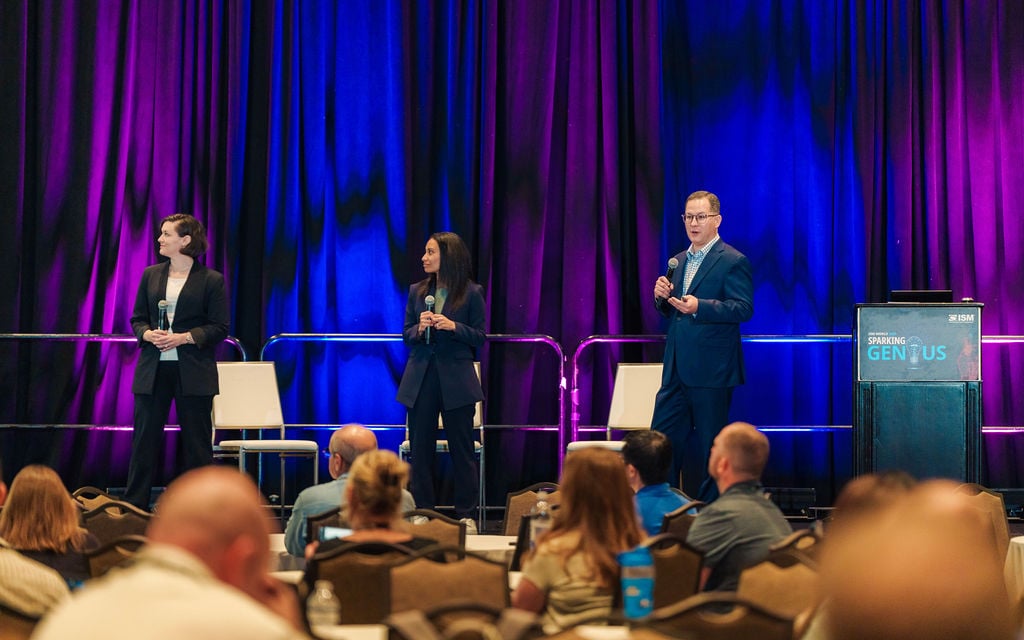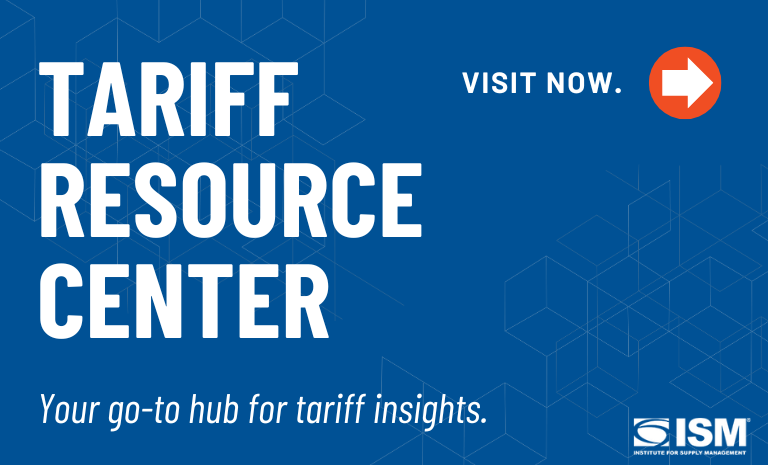ISM World 2025: Trade Compliance and ‘Staying Out of the Headlines’

(From left) Megan MacCallum, Vanessa Gomez and Jonathan Todd of Benesch, Friedlander, Coplan & Aronoff LLP, during their session “What to Do Now About International Trade Compliance: 2025 News Headlines Edition” at ISM World 2025 on Sunday. (Yannick Apers Photography)
It was somewhat fitting that among the music playing as attendees filed into one of the first breakout sessions at ISM World 2025, Institute for Supply Management®’s (ISM®) Annual Conference in Orlando, Florida, on Sunday was the 1981 anthem by Queen and David Bowie, “Under Pressure.”
Amid the Trump administration’s constantly shifting trade policies, supply chain managers have done everything but scream, “Let me out!” Still, with the tariffs turbulence as well as supply chain challenges stemming from the coronavirus pandemic that haven’t fully subsided, “the last five months have felt like a career,” said session presenter Jonathan Todd, vice chair of transportation and logistics law at Benesch, Friedlander, Coplan & Aronoff LLP, a national law firm based in Cleveland.
He added, “So, consider this group therapy. We’ll all get through it.” And this was the theme of “What to Do Now About International Trade Compliance: 2025 News Headlines Edition,” presented by Todd and two of his Benesch firm colleagues, managing associates Megan MacCallum and Vanessa Gomez.
They cited last week as an example:
- On Wednesday, the federal Court of International Trade (CIT) ruling suspended the Trump administration’s “Liberation Day” tariffs, as well as separate duties on Canada, Mexico and China. But an appeal and other tools at the White House’s disposal could make the pause temporary.
- The next day, an appeals court granted a pause on the CIT’s ruling, keeping the Trump tariffs in place while it “considers the motions papers,” for a longer stay, but the Supreme Court might eventually take up the issue.
- On Friday, Trump announced that he would set tariffs on steel imported into the U.S. at 50 percent, doubling current rates.
“It’s the kind of week that keeps supply chain people up at night,” he said.
The trio identified three main sources of compliance risks: imports, exports and sanctions. The third element is often overlooked, Todd said, citing recent headlines on sanctions against Syria and Russia, as well as longtime penalties on Cuba and Iran that remain in effect. Sanctions can be applied to individuals, companies and other entities like drug cartels.
It’s important for procurement organizations to have visibility into trading partners and where their products originate, lest they inadvertently source from a sanctioned entity. “A supplier might say that a product originated in a country that isn’t under the influence of China,” MacCallum said. “A company find out otherwise on the other end, when the shipment gets detained by (U.S. Customs and Border Protection).”
The session covered business in Asia, North America and Europe, covering headlines related to such risks as retaliatory tariffs, forced labor, nearshoring and reshoring, and the U.S.-Mexico-Canada (USMCA) agreement. Nearly all of the issues impact operating cost volatility, the top risk reported by attendees in smart-device snap polls conducted during the session.
Visibility and diligence are critical to a company remaining cool under pressure and, as Todd put it, “staying out of the headlines.”
Key Takeaways
- Develop risk assessments to identify high impact challenges, which helps raise awareness for company specific risks. Effective compliance grows out of these understandings.
- All compliance processes need “owners.” Train these stakeholders to identify red flags and act swiftly on reported incidents and other learnings.
- Implement risk-appropriate processes that are capable of growth and change. Determine the best tools for such dynamics as relationships, footprints and trade lanes.
- The golden rule of compliance is to support procurement and sales teams, who are on the front lines of compliance, quality and risk. Provide the operational tools and empowerment that enable success.
Quote
“We should have more clarity (on tariffs) in the third quarter. And as supply chain professionals, we should be able to do our jobs better if we have more clarity.” — Todd

